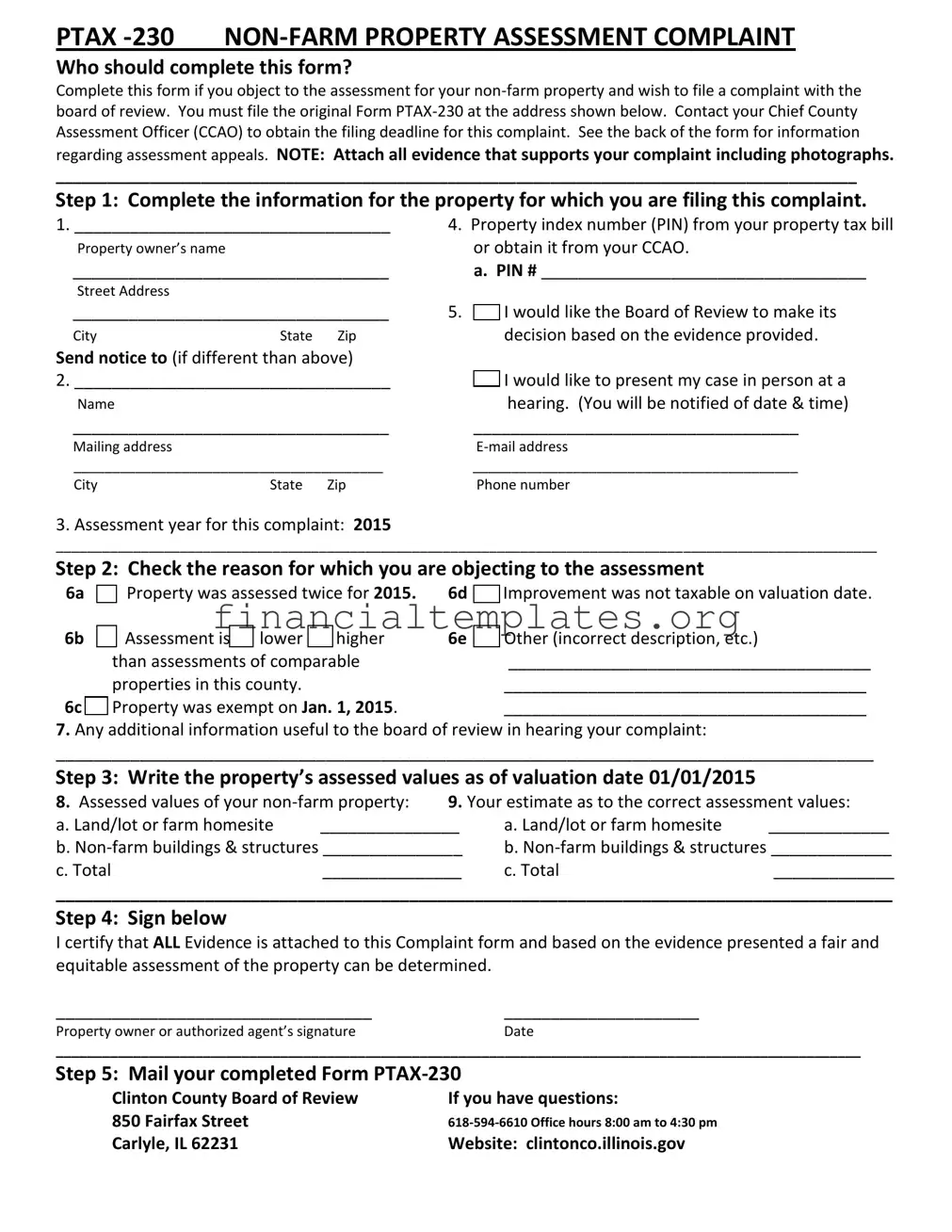Illinois Property Assessment Appeal Process Guide
_____________________________________________________________________________
General information
When going through the appeal process, you (property owner) are appealing the assessed value (assessment) of your property, not the tax bill. The tax bill amount is determined by the various tax rates applied to the assessment (after review and equalization by the board of review) by taxing districts (schools, parks, libraries, etc.) Tax rates are not an issue in the appeal process, only the assessment amount may be appealed.
Property is assessed each assessment year by township/multi-township assessor or by CCAO if the county has no township form of government. By law (35 ILCS 200/9-145), assessments of property, other than farmland and coal, are required to be assessed at 33 1/3% of its fair cash (market) value. If the assessment is to increase, the CCAO must publish the change in a local newspaper. The change is subject to further equalization and revision by the board of review as well as state equalization by the Illinois Department of Revenue.
You appeal ust e filed ith the oa d of e ie 30 da s afte the CCAO’s pu li atio of the ha ges. Appeals filed late will not be heard. Once you receive the tax bill, it is generally too late to make an appeal fo that ea ’s
assessment. The board of review will mail you final notice of its decision.
See “Co tact I for atio o f o t fo help fili g a appeal o to o tai oa d of e ie ’s hea i g p o edu es.
How a tax bill is calculated
The county treasurer bills and collects property taxes for the year following the assessment year. Your tax bill is determined by taking the equalized assessed value (after board of review and state equalization) of your property and applying the aggregate tax rates from levies of all local taxing districts and units of local government. Your tax bill is calculated as follows:
Equalized assessed value – homestead exemptions = taxable value (assessment) X total tax rates of all taxing districts = total tax bill
Note: You a ualif fo a ho estead e e ptio hi h ill edu e ou p ope t ’s e ualized assessed alue.
Homestead exemptions are available for general homestead, home improvements, disabled persons, disabled veterans, returning veterans and senior citizens. See Co tact I for atio on front for assistance with homestead exemptions.
Formal Appeal
Proceed with a formal appeal to the board of review if any of the following claims can be supported:
Assesso ’s esti ate of fai a ket alue is highe tha a tual fair market value. Supported if you have recently purchased your property on the open market of if a professional appraisal is supplied.
Assessed value is at a higher percentage of market value than the prevailing township or county median level as shown in an assessment/sales ratio study.
Primary assessment is based on inaccurate information (incorrect measurement of lot or building, etc.). Assessment is higher than similar neighboring properties.
Steps to appeal
An appeal of an assessment (other than on farmland or farm buildings) has several steps to take. For farmland or farm building, you must file Form PTAX-227, Farm Property Assessment Complaint.
Obtain property record card with assessed property valuation. Determine fair market value.
Determine prevailing level of assessment for jurisdiction. Determine the basis for your complaint.
File Form PTAX-230 along with your all evidence with the board of review before the deadline.
Evidence needed
Refer to the evidence document needed as compiled by the Clinton County Board of Review. Submit photos and any pertinent documentation to substantiate your complaint.


